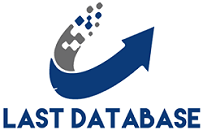Long Codes
Long codes are standard 10-digit phone numbers used primarily for per India Mobile Number son-to-person communication but can also be used for business messaging. They are ideal for smaller-scale marketing campaigns and customer service interactions due to their personalized nature. Long codes are particularly useful for businesses that want to have a local presence, as these numbers can be region-specific. They support two-way communication, allowing customers to reply to messages, which is beneficial for customer service, appointment reminders, and feedback collection.
However, long codes have limitations. They have lower throughput, typically sending only one message per second, which makes them less suitable for large-scale campaigns. Additionally, they are subject to carrier restrictions and may be flagged as spam if used excessively for marketing purposes.
Toll-Free Numbers
Toll-free numbers are also 10-digit numbers but start with a distinct three-digit code (e.g., 800, 888, 877). These numbers are traditionally associated with customer service and support, offering a professional and accessible way for customers to reach a business without incurring charges. In SMS marketing, toll-free numbers offer several advantages. They support higher throughput than long codes, making them suitable for more substantial messaging volumes. Toll-free numbers can enhance brand recognition and trust, as customers are familiar with their use for customer service.
Moreover, toll-free numbers support two-way messaging, enabling businesses to engage in interactive communication with their customers. This feature is beneficial for handling customer inquiries, providing support, and facilitating transactions. However, like long codes, toll-free numbers may face carrier restrictions and potential spam issues if not managed correctly.

Short Codes
Short codes are 5- to 6-digit numbers designed explicitly for high-volume messaging and marketing campaigns. They are the most effective option for large-scale SMS marketing due to their high throughput, capable of sending hundreds of messages per second. This makes them ideal for time-sensitive promotions, event notifications, and mass communication.
Short codes come in two types: shared and dedicated. Shared short codes are used by multiple businesses, which can lead to potential cross-branding issues. Dedicated short codes are unique to a single business, offering greater control over messaging and branding. Additionally, dedicated short codes can be customized to be memorable, enhancing brand recognition and customer engagement.
Short codes are generally considered more trustworthy by carriers and customers, reducing the likelihood of messages being flagged as spam. However, they are more expensive to obtain and maintain than long codes and toll-free numbers. The higher cost can be justified by the increased reliability and effectiveness for large-scale campaigns.
Conclusion
Choosing between long codes, toll-free numbers, and short codes depends on the specific needs and scale of a business's SMS marketing strategy. Long codes are suitable for personalized, low-volume interactions; toll-free numbers provide a professional, recognizable option for higher-volume messaging; and short codes are the best choice for extensive, high-speed marketing campaigns. By understanding the advantages and limitations of each option, businesses can effectively leverage SMS marketing to engage with their customers and drive growth.


